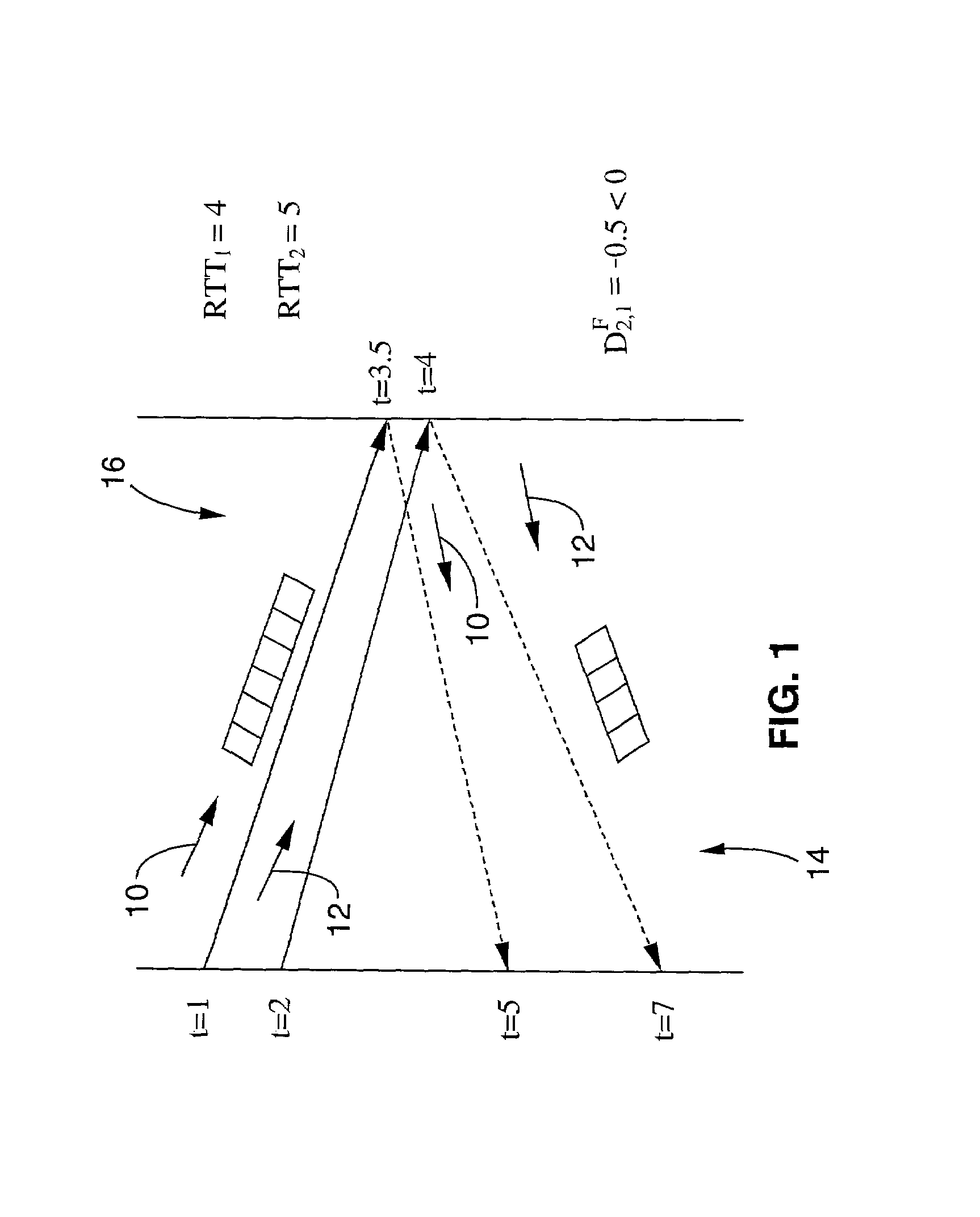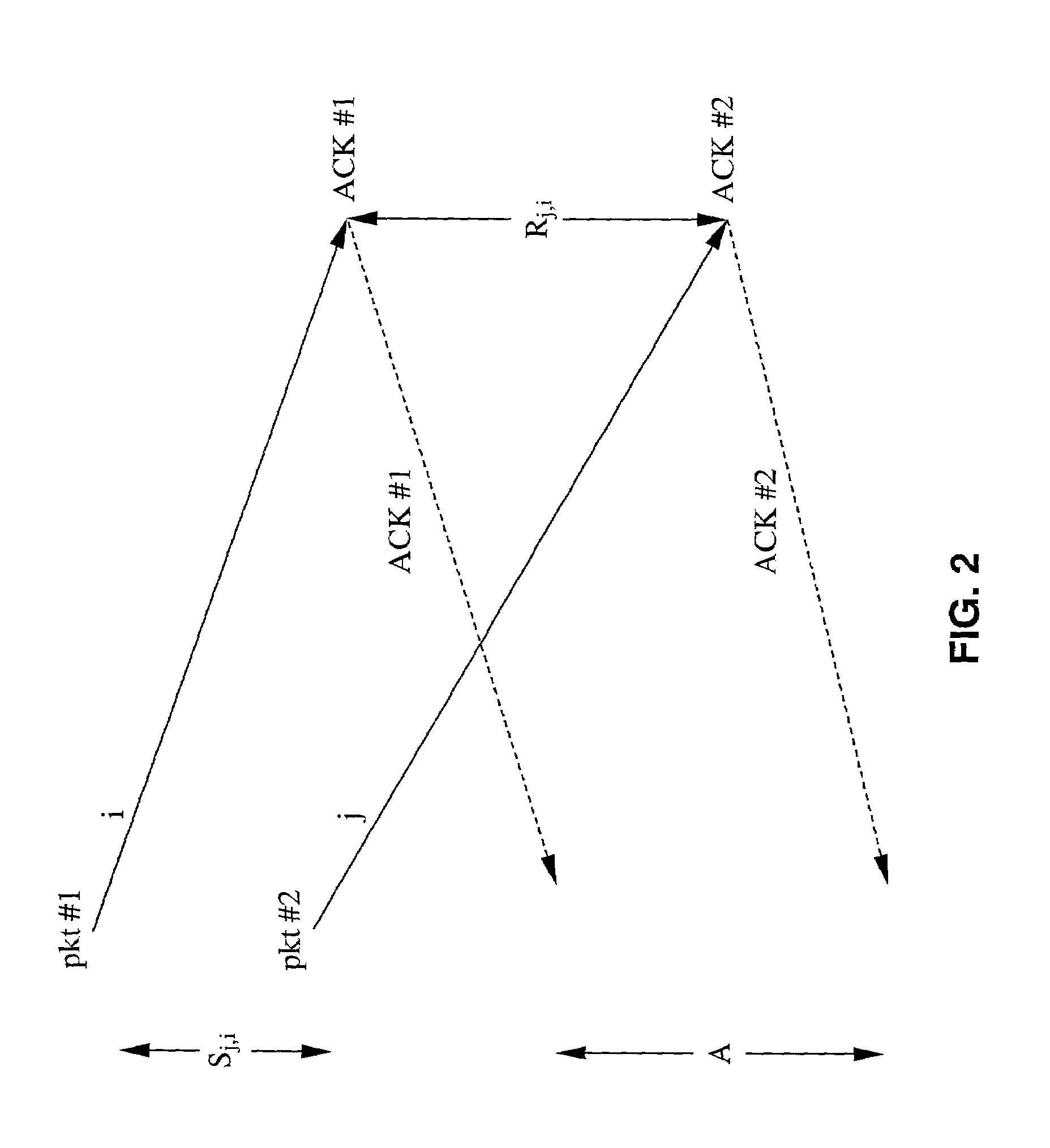Method for improving TCP performance over wireless links
a wireless link and performance improvement technology, applied in the field of routing data in wireless networks, can solve the problems of significant underutilization of the link with higher capacity, ack loss, data traffic on the forward path burst, etc., and achieve the effect of accurate determination of congestion
- Summary
- Abstract
- Description
- Claims
- Application Information
AI Technical Summary
Benefits of technology
Problems solved by technology
Method used
Image
Examples
Embodiment Construction
[0032]The present invention, which we refer to herein as “TCP-Santa Cruz”, can monitor the queue developing over a bottleneck link in a wireless network and thus determine whether congestion is increasing in the network. It can then identify losses as either congestive or random and respond appropriately. The following is a description of a preferred embodiment of the invention. Those skilled in the art will appreciate, however, that the technology may be implemented in alternative embodiments without departing from the invention herein.
[0033]TCP-Santa Cruz comprises two major areas of improvement over TCP Reno: congestion control and error recovery. With our error recovery methods we can perform timely and efficient early retransmission of any lost packet, eliminate unnecessary retransmissions for correctly received packets when multiple losses occur within a window of data, and provide RTT estimates during periods of congestion and retransmission, i.e., eliminate the need for Karn...
PUM
 Login to View More
Login to View More Abstract
Description
Claims
Application Information
 Login to View More
Login to View More - R&D
- Intellectual Property
- Life Sciences
- Materials
- Tech Scout
- Unparalleled Data Quality
- Higher Quality Content
- 60% Fewer Hallucinations
Browse by: Latest US Patents, China's latest patents, Technical Efficacy Thesaurus, Application Domain, Technology Topic, Popular Technical Reports.
© 2025 PatSnap. All rights reserved.Legal|Privacy policy|Modern Slavery Act Transparency Statement|Sitemap|About US| Contact US: help@patsnap.com



